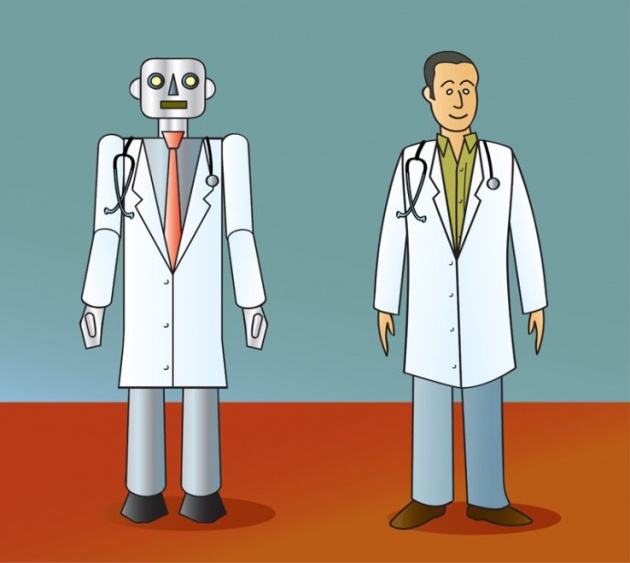
Advancements in robotic surgery continue to make headlines, especially with the latest news about Ethicon, a medical device company in the Johnson & Johnson family, entering into a partnership with the Life Sciences team at Google to develop surgical robotics. But what is the real future of medical robots?
One area of current research, performed by the Florida Hospital Nicholson Center, is taking a look at how to bring the Internet to robotic surgery by tackling the latency, or lag time, that occurs during remote procedures. Latency is a particularly important measure for telesurgery because it determines how safely a surgeon can operate with delayed video and control signals. It is also where the bottleneck in technology has traditionally existed.
Telesurgery has been in existence for some time, but there have been substantial barriers to its implementation, including adequate bandwidth and delays in video feedback. This type of surgical innovation has been of interest to the military, and while it has previously been tested between countries, our research is primarily focused on testing lag times across technology-rich locations, such as hospital campuses domestically.
To launch the current test, we first had to discover how much latency a surgeon could tolerate while still performing a successful surgery. We accomplished this with simulators of the robot which could be programmed with specific latency levels for different experienced surgeons in the experiment.
During the latency test, we learned that surgeons could feel a lag in their movements at 300 milliseconds and higher. In the 300-500 milliseconds range, surgeons compensated for the lag by slowing their movements and becoming more conscious about each step. After some practice, the surgeons’ movements at this level were no longer one fluid stroke, but a sequence of individual steps connected together.
At 600 milliseconds, most surgeons could no longer handle the latencies and performed the tasks unsafely. Using this information, we labeled 0-200 milliseconds as a safe range, 300-500 as a potentially usable range, and 600 milliseconds and higher as an unsafe range.
Using the IT infrastructure between multiple hospital campuses, we measured an actual latency on large packet delivery of only 5 milliseconds within metropolitan Orlando. Latency between Orlando and Tampa, a distance of 65 miles, ranged between 10 and 150 milliseconds. Finally, latency from Orlando to Fort Worth, Texas, a distance of 1,200 miles, was 30 to 150 milliseconds.
Based on these tests, we have determined that telesurgery is possible and generally safe for large areas within the United States. Limitations are no longer due to lag time but rather factors associated with reliability, social acceptance, insurance and legal liability. There are plans to test longer distances in the future, but we remain confident that the networks that exist between hospitals today are more than sufficient to support telesurgery.
But what does all of this mean for Internet of Things? It means medical devices have major potential with the Internet, reducing the communication time between those devices, increasing efficiency and ease of use.
This lag-time research is laying the groundwork for telesurgery and the future of the Internet of connected medical devices. It not only gives us a better picture of how remote surgery can be performed safely in a technology-rich environment, but also uncovers why manufacturers of surgical robots and other medical devices should be further enabled for the Internet.
Once we fully understand where and when this lag will not limit surgery, we can begin to explore other societal issues that will need to be addressed, such as insurance coverage, physician licensing, legal barriers and patient interest.



